The Sporting Life in Scarsdale: Historic Photos on Display
- Details
- Written by: Joanne Wallenstein
- Hits: 1974
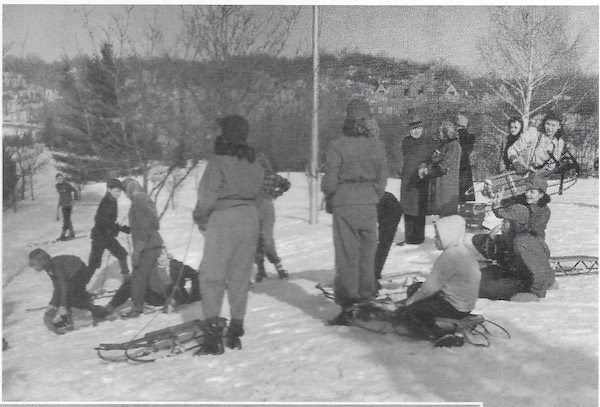 Sledding and skiing on the grounds of Scarsdale Golf Club, c. 1930’s. Credit: Scarsdale Golf ClubA new exhibit on display at Scarsdale Library, curated by the Scarsdale Historical Society, documents the development of winter sports in Scarsdale. Using photos from the Westchester County Archives, the Scarsdale Inquirer, Fox Meadow Tennis Club and Scarsdale Golf Club – (who celebrates its 125th anniversary this year), Leslie Chang brings to life the history of platform tennis, ice skating and coasting (sledding) by some of Scarsdale’s earliest residents.
Sledding and skiing on the grounds of Scarsdale Golf Club, c. 1930’s. Credit: Scarsdale Golf ClubA new exhibit on display at Scarsdale Library, curated by the Scarsdale Historical Society, documents the development of winter sports in Scarsdale. Using photos from the Westchester County Archives, the Scarsdale Inquirer, Fox Meadow Tennis Club and Scarsdale Golf Club – (who celebrates its 125th anniversary this year), Leslie Chang brings to life the history of platform tennis, ice skating and coasting (sledding) by some of Scarsdale’s earliest residents.
At a reception on Wednesday night March 1 to celebrate the opening of "Scarsdale On Ice," Chang told some captivating stories about the sporting life in Scarsdale.
The earliest reference to skating took place on “Scarsdale Lake,” which was formed when a dam was built in the Bronx River in 1913 that created a lake, just above the current waterfall near Scarsdale Village. Skaters also used the Duck Pond and Greenacres Pond, along with pop-up rinks created by flooding sections of Crossway Field, Hyatt Field and the Brite Avenue Tennis Courts.
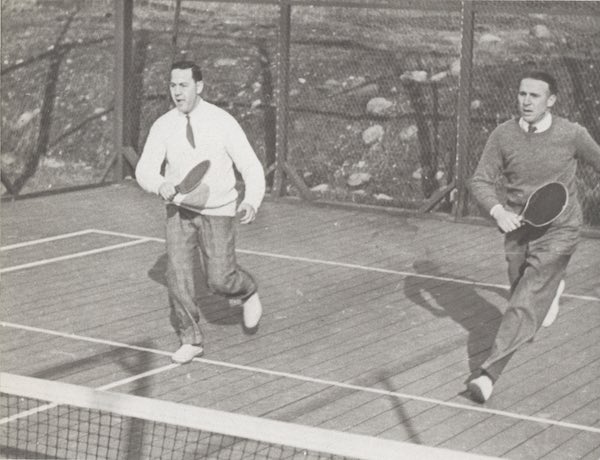 Charlie O'Hearn and Jim Hynson play platform tennis at FMTC in 1938. Credit: Fox Meadow Tennis ClubIn 1952 the Recreation Department hosted a pop-up rink by flooding a 75 X 100 foot section of the Brewster Road parking lot at Scarsdale High School. During the holiday break, a reported 3,200 skaters turned out to enjoy the rink, floodlights and music. In 1973 a $500,000 bond proposal was made to build a skating rink the size of Rye Playland near the Scarsdale Pool, but it failed to get sufficient votes.
Charlie O'Hearn and Jim Hynson play platform tennis at FMTC in 1938. Credit: Fox Meadow Tennis ClubIn 1952 the Recreation Department hosted a pop-up rink by flooding a 75 X 100 foot section of the Brewster Road parking lot at Scarsdale High School. During the holiday break, a reported 3,200 skaters turned out to enjoy the rink, floodlights and music. In 1973 a $500,000 bond proposal was made to build a skating rink the size of Rye Playland near the Scarsdale Pool, but it failed to get sufficient votes.
 Joslyn and Sally Magowan trap shooting at the Scarsdale Golf Club in 1928. The sport was once popular during the club's off season. Credit: Magowan - Birdzell FamilyIn the 1920's two skilled ice dancers, James Cogswell and Fessendon Blanchard, taught others at Fox Meadow Tennis Club where the courts were flooded to form a rink. Skaters danced to the accompaniment of Viennese Waltzes and German Polkas that were amplified over the courts. But these two are even more famous for developing the sport of Platform Tennis. In 1928 they built the first court at their home above Ardsley Road and tested different racquets and balls. After losing too many balls that flew down Ardsley Road, they built a chicken wire fence around the court. Eventually they convinced Fox Meadow Tennis Club to build their first platform tennis court in 1931 and the club found that it improved their membership numbers during the winter months. The rest is history!
Joslyn and Sally Magowan trap shooting at the Scarsdale Golf Club in 1928. The sport was once popular during the club's off season. Credit: Magowan - Birdzell FamilyIn the 1920's two skilled ice dancers, James Cogswell and Fessendon Blanchard, taught others at Fox Meadow Tennis Club where the courts were flooded to form a rink. Skaters danced to the accompaniment of Viennese Waltzes and German Polkas that were amplified over the courts. But these two are even more famous for developing the sport of Platform Tennis. In 1928 they built the first court at their home above Ardsley Road and tested different racquets and balls. After losing too many balls that flew down Ardsley Road, they built a chicken wire fence around the court. Eventually they convinced Fox Meadow Tennis Club to build their first platform tennis court in 1931 and the club found that it improved their membership numbers during the winter months. The rest is history!
The Scarsdale Historical Society has produced an engaging exhibit of posters featuring historic photos and stories about winter sports in Scarsdale that is on view to the public at Scarsdale Library. Check out "Scarsdale on Ice," to fully understand how our forbearers left behind the legacy of the sporting life that continues today.
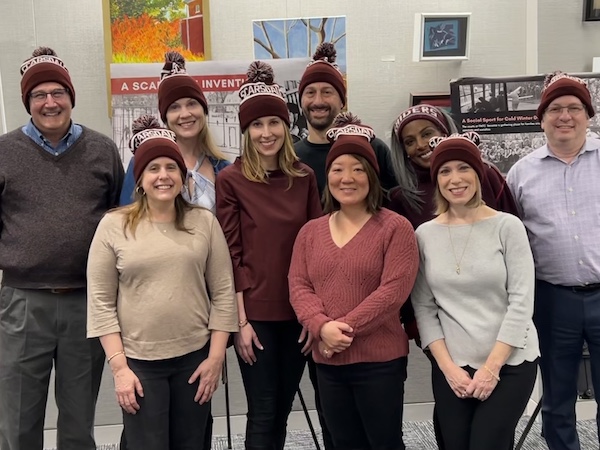 The Board of the Scarsdale HIstorical Society at the opening of "Scarsdale on Ice."
The Board of the Scarsdale HIstorical Society at the opening of "Scarsdale on Ice."
Baroque and Beyond Music Festival: Hoff-Barthelson’s Celebration of Music
- Details
- Written by: Joanne Wallenstein
- Hits: 1342
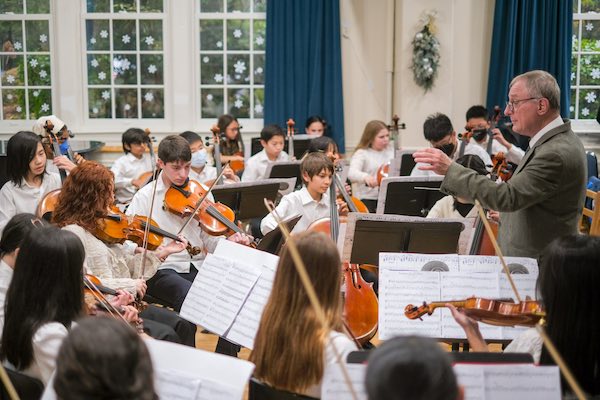 Baroque and Beyond Music Festival: Hoff-Barthelson’s Celebration of Music composed between 1600-1750
Baroque and Beyond Music Festival: Hoff-Barthelson’s Celebration of Music composed between 1600-1750
Festival to feature music of great Germanic composers — Bach, Telemann, and Handel — as well as masters from other lands
Hoff-Barthelson Music School’s Baroque and Beyond Music Festival, celebrating music composed between 1600 and 1750, takes place Saturday, March 11, through Sunday, March 19, 2023. The Festival, featuring music of the great Germanic composers – Bach, Telemann, and Handel – as well as masters from other lands, includes student recitals and instrumental and choral ensemble concerts.
Baroque and Beyond is part of the School’s “Festivals in Style” that introduces students to music from specific periods of music. Students enjoy the opportunity for detailed study of period solo and ensemble works and are invited to audition to participate in recitals. “The audition experience, regardless of the outcome, helps students develop positive habits around meeting deadlines, handling pressure, accepting criticism, learning the value of hard work, and sometimes even accepting disappointment—all valuable life skills,” said Ken Cole, Executive Director.
On Saturday, March 11, and Sunday, March 19, 2023, at 7:00 pm, student performances will take place at the Community Unitarian Universalist Congregation at White Plains, 468 Rosedale Avenue, White Plains. Ensembles scheduled to perform include the Festival Orchestra (Jun Nakabayashi, director); Suzuki Strings (Barbara Berg, director); Flute Clubs (Donna Elaine and Joseph Piscitelli, directors); Symphonette and Chamber Orchestra (Robert Schwartz, director); Wind Ensemble (Joseph Piscitelli, director); Beginner Voices (Yuki Hiruma Charlesworth, director); and the Adult Handbell Choir (Donna Elaine, director). Admission to these two events is a suggested donation of $20; HBMS students may attend free of charge.
Student recitals are scheduled at the Music School throughout the Festival. Visit the School website – www.hbms.org – for dates and times. These recitals are free of charge and open to the public to attend.
The Baroque and Beyond Festival is made possible, in part, with a grant from the Westchester Community Foundation, a division of The New York Community Foundation. Westchester Community Foundation’s mission is to connect generous people to the causes they care about and invest in transformative ideas and organizations to improve lives and strengthen our community. WCF is a division of The New York Community Trust, one of the largest community foundations in the country, with assets of approximately $2.6 billion.
For Additional Information
For additional information: 914-723-1169, hb@hbms.org, www.hbms.org.
Gifts with Love from Scarsdale Village
- Details
- Written by: Joanne Wallenstein
- Hits: 2110
 You don’t have to look farther than Scarsdale Village for some luxe gifts for Valentine’s Day. Whether you want bling, scent, a spa treatment or something red to wear, you’ll find it right here.
You don’t have to look farther than Scarsdale Village for some luxe gifts for Valentine’s Day. Whether you want bling, scent, a spa treatment or something red to wear, you’ll find it right here.
Take a look at what local merchants have in store for a gift of love:
For 118 years and five generations, Wilson & Son Jewelers has been Westchester's premiere family jeweler. They are proud to have been a part of your most important milestones and events for over a century. Whether a diamond or a timepiece, their elegant showroom, and exceptional team are happy to help you find your next gift. Wilson and Son Jewelers welcomes you to their newly expanded location at 10 Spencer Place in Scarsdale.
Here are their recommendations for Valentine’s Day:
Monica Rich Kosann Eighteen Karat Yellow Gold and Diamond Charlotte  Locket
Locket
Your story is set in stone. Meet "Charlotte". This oval locket features stunning white diamond accents. Perfect on its own or layered with your other favorite pieces. Your stories are important, "Charlotte" will help you tell them.
Marco Bicego Eighteen Karat Yellow Gold and Diamond Lunaria Earrings
The Lunaria Collection is a line born from Marco's love of nature. Crafted entirely of hand-engraved, 18-karat yellow gold petals framed by polished gold and hand-molded by expert craftsmen, the collection resembles the gentle movement of petals blowing in the wind.
 28MM Steel and Yellow Gold Tudor Royal Timepiece
28MM Steel and Yellow Gold Tudor Royal Timepiece
The refined aesthetic of this Tudor Royal timepiece is further enhanced by its stunning mother-of-pearl diamond dial. It is the epitome of versatile sport-chic.
Roberto Coin Eighteen Karat Yellow Gold and Diamond Navarra Bangle
Inspired by the Navarra region of Spain, this bangle interprets cross-cultural influences as a classic yet modern piece, modeled after traditional links but styled for a new millennium.
Vlora Serafina Eighteen Karat Yellow Gold and Diamond Serafina Ring This ring is a reminder that you are loved, protected, and out-of-this-world chic. Its hexagon motif's six sides are a nod to the six-winged angels known as seraphim.
This ring is a reminder that you are loved, protected, and out-of-this-world chic. Its hexagon motif's six sides are a nod to the six-winged angels known as seraphim.
Scentfluence offers the gift of aromas:

ScentFluence is the place to fall in love with a unique Valentine’s gift for all the loves in your life. Discover a beautiful selection of candles, unique luxury diffusible scents (1-Hotels, Arlo, Auberge Resorts…) as well as 70 others ambient scents and elegant diffusers to help your love take flight well past February 14th.
ScentFluence 22 Harwood Court, Scarsdale Village. Tuesday – Saturday 12-5pm or visit scentfluence.com.
Share the Love with I Am More Scarsdale this Valentine’s Day, featuring the best in fashion and accessories. For the ladies in your life, consider our featured assortment of pouches, clutches and totes from BTB Los Angeles, DLD Beach, Florabella, Hi Love Travel and TRVL ($40-$378), spring sweaters and blouses from Allison, Brodie and Cami NYC ($108-$165), and Voile Blanche’s new spring raffia platform sneaker in rose ($265).

Don’t miss out on our last call for end of season blowout savings up to 70% off most fall and winter merchandise. Discounts are available in-store and automatically applied online.
Located at 6 Spencer Place in Scarsdale, I Am More Scarsdale’s mission is to empower women to make them feel confident, to support women-owned businesses and designers, and to give back to local and women’s philanthropic organizations.
 Greenwich Medical Spa is founded on deeply personalized care to ensure your non-surgical facial and body contouring treatments perfectly align with the results you seek. Our nationally recognized team works closely with you, providing award-winning care and results found nowhere else. It’s this five-star service that keeps us in the top 1% of medical spas nationwide. Greenwich Medical Spa in the Golden Horseshoe invites you to create your perfect pout this Valentine's Day! Greenwich Medical Spa is giving away a free Lip Filler treatment this February to one lucky winner. Don't forget to follow the rules in order to be entered, good luck! Enter now.
Greenwich Medical Spa is founded on deeply personalized care to ensure your non-surgical facial and body contouring treatments perfectly align with the results you seek. Our nationally recognized team works closely with you, providing award-winning care and results found nowhere else. It’s this five-star service that keeps us in the top 1% of medical spas nationwide. Greenwich Medical Spa in the Golden Horseshoe invites you to create your perfect pout this Valentine's Day! Greenwich Medical Spa is giving away a free Lip Filler treatment this February to one lucky winner. Don't forget to follow the rules in order to be entered, good luck! Enter now.
What to Watch: Best Movies / TV Shows Available Now
- Details
- Written by: Wendy MacMillan
- Hits: 3132
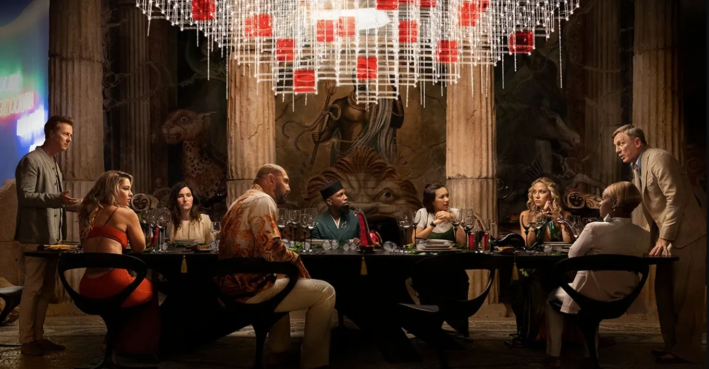
Emily in Paris (Romantic-Comedy) TV-MA (Netflix)
Harry and Meghan (Netfllix)
Paulin Lights Lego Menorah
- Details
- Written by: Joanne Wallenstein
- Hits: 1503
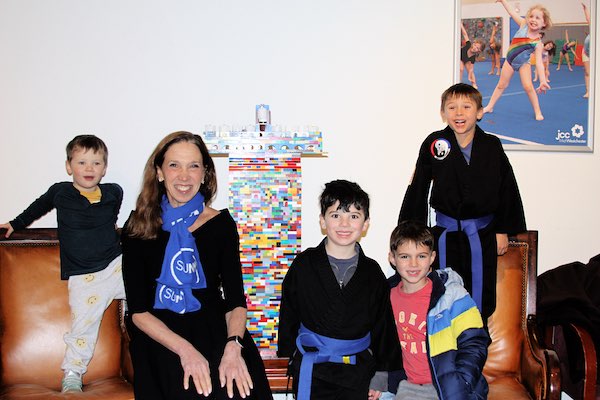 State Assemblywoman Amy Paulin celebrated Hanukkah with children at the JCC of Mid-Westchester and Rabbi Dahlia Bernstein on December 20, 2022. The candle lighting featured a large Lego Menorah, built by the kids. A memorable night for all.
State Assemblywoman Amy Paulin celebrated Hanukkah with children at the JCC of Mid-Westchester and Rabbi Dahlia Bernstein on December 20, 2022. The candle lighting featured a large Lego Menorah, built by the kids. A memorable night for all.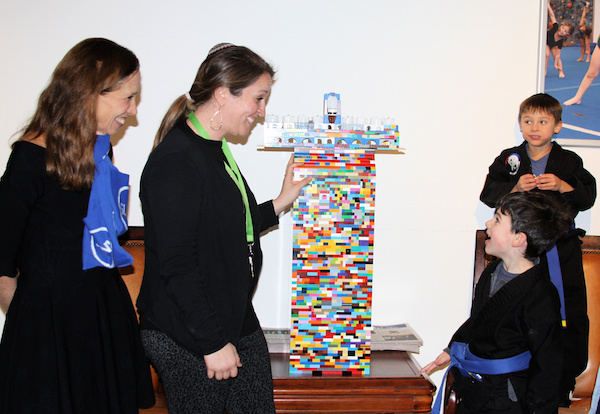
Photos by Michelle Sterling










